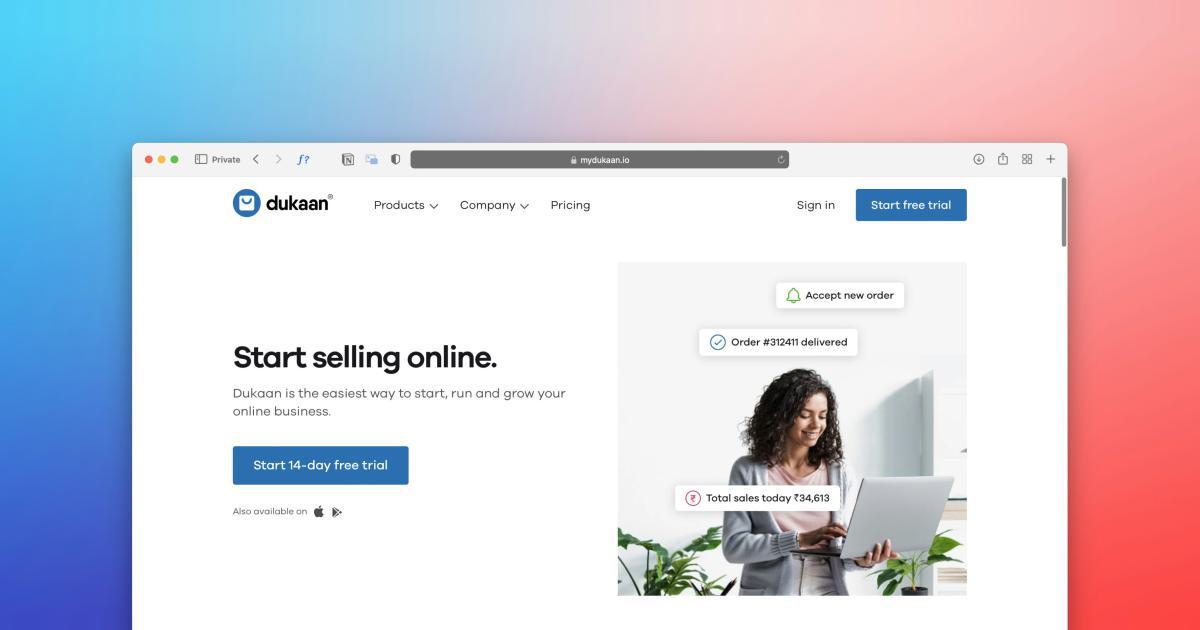10 Proven Content Distribution Channels for B2B


Introduction: The Importance of Content Distribution for B2B Businesses
In the ever-evolving digital landscape, effective content distribution has become a critical component of a successful B2B marketing strategy. While creating high-quality, informative content is essential, ensuring that it reaches the right audience is just as crucial. B2B companies must navigate a complex maze of content distribution channels, each with its unique advantages and challenges.

In this comprehensive guide, we will explore 10 proven content distribution channels for B2B businesses, providing in-depth insights, real-world examples, and actionable strategies to help you maximize the impact of your content and reach your target audience effectively.
1. Owned Media Channels
Corporate Website
The corporate website remains the foundation of any B2B content distribution strategy. It serves as the primary hub for your brand's content, allowing you to showcase your expertise, thought leadership, and product/service offerings.
To optimize your website for content distribution, consider the following strategies:
Optimize for Search Engines: Ensure your website is optimized for search engine visibility, making it easier for your target audience to find your content through organic search. This includes implementing SEO best practices, such as keyword research, on-page optimization, and technical SEO.
Incorporate Engaging Content: Populate your website with a variety of content formats, including blog posts, whitepapers, case studies, and multimedia assets. This diverse content offering will cater to the varying preferences of your audience.
Leverage Calls-to-Action (CTAs): Strategically place CTAs throughout your website, encouraging visitors to engage further with your content, download resources, or connect with your sales team.
Implement Content Syndication: Consider syndicating your website content to other reputable industry-relevant platforms, expanding your reach and driving additional traffic back to your site.

Email Marketing
Email marketing remains a powerful tool for B2B content distribution, allowing you to directly reach your target audience with personalized, relevant content.
Key strategies for effective email marketing include:
Segmentation and Personalization: Segment your email list based on demographics, firmographics, and behavioral data to deliver highly targeted and personalized content.
Nurture Campaigns: Develop email nurture campaigns that guide your leads through the buyer's journey, providing value-added content at each stage.
Newsletter Distribution: Regularly send out a company newsletter featuring your latest blog posts, industry insights, and other relevant content.
Promote Gated Content: Use email to promote and distribute access to your gated content assets, such as whitepapers, webinars, and reports.

Social Media Platforms
Social media platforms offer B2B companies a powerful avenue for content distribution and audience engagement. While the most popular platforms may vary by industry, some of the key channels to consider include LinkedIn, Twitter, and YouTube.
LinkedIn: As the premier professional social network, LinkedIn is an excellent platform for sharing thought leadership content, engaging with your industry peers, and building brand awareness.
Twitter: Twitter's real-time nature and emphasis on bite-sized content make it well-suited for sharing quick tips, industry news, and engaging with your audience.
YouTube: If your content strategy includes video content, such as product demos, interviews, or educational tutorials, YouTube can be a highly effective distribution channel.
Content Repurposing: Repurpose your written content into different media formats, such as videos, infographics, or social media posts, to extend its reach and appeal to diverse learning preferences.

2. Paid Media Channels
Paid Search (PPC)
Leveraging paid search (PPC) advertising can be a strategic way to amplify the reach of your content and drive targeted traffic to your website.
Keyword Targeting: Conduct thorough keyword research to identify the most relevant and high-intent search terms for your target audience.
Ad Messaging and Targeting: Craft compelling ad copy that highlights the value of your content and aligns with the search intent of your audience.
Retargeting: Use retargeting campaigns to re-engage users who have previously interacted with your content, encouraging them to revisit and convert.
Landing Page Optimization: Ensure your landing pages are optimized for conversion, providing a seamless user experience and clear next steps for your visitors.

Display Advertising
Display advertising, including banner ads and native placements, can help you reach a broader audience and drive awareness of your content.
Contextual Targeting: Place your ads on websites and platforms that are relevant to your target audience and the topics covered in your content.
Audience Targeting: Leverage demographic, firmographic, and behavioral data to precisely target your ideal B2B customers.
Retargeting Campaigns: Implement retargeting strategies to re-engage users who have previously interacted with your content or website.
Ad Creative Optimization: Continuously test and refine your ad creatives to improve click-through rates and content engagement.

Social Media Advertising
Social media advertising platforms, such as LinkedIn Ads, Twitter Ads, and Facebook/Instagram Ads, offer sophisticated targeting and measurement capabilities to help you distribute your content effectively.
Audience Targeting: Leverage the rich user data available on social media platforms to target your ads to your ideal B2B customers based on factors like job title, industry, company size, and interests.
Content Promotion: Use social media ads to boost the visibility of your high-performing organic content, driving more traffic and engagement.
Lead Generation: Create targeted ad campaigns to capture qualified leads through the use of gated content, webinar signups, or other conversion-focused offers.
Retargeting and Remarketing: Implement retargeting and remarketing strategies to re-engage users who have previously interacted with your content or website.

3. Earned Media Channels
Guest Posting and Syndication
Securing guest posting opportunities on industry-relevant publications and websites can help you reach new audiences and establish your brand as a thought leader.
Identify Relevant Publications: Research and compile a list of industry-leading publications, blogs, and websites that align with your target audience and content themes.
Craft Compelling Pitches: Develop a consistent pipeline of guest post ideas and craft personalized pitches that highlight the value your content can bring to the publication's readership.
Leverage Existing Relationships: Leverage any existing relationships or connections you have within your industry to secure guest posting opportunities.
Content Syndication: In addition to guest posts, consider syndicating your content to other reputable industry-relevant platforms, expanding your reach and driving additional traffic back to your site.

Influencer Collaborations
Collaborating with industry influencers and experts can help you tap into their established audiences and lend credibility to your content.
Identify Relevant Influencers: Research and identify influential figures within your industry who have a strong following and alignment with your target audience.
Develop Mutually Beneficial Partnerships: Reach out to potential influencers and propose collaborative opportunities, such as co-creating content, hosting joint webinars, or featuring each other's expertise.
Leverage Influencer Promotion: Encourage your influencer partners to promote your content across their own channels, amplifying your reach and lending their personal endorsement.
Measure and Optimize: Closely track the performance of your influencer collaborations and continuously refine your approach to maximize the impact.

4. Shared Media Channels
Industry Forums and Communities
Engaging with industry-specific forums, communities, and online discussions can help you distribute your content and position your brand as a valuable resource.
Identify Relevant Communities: Research and join active online communities, discussion forums, and industry groups that align with your target audience and content themes.
Provide Value, Not Promotion: Participate in these communities by sharing insightful comments, answering questions, and offering value-added content, rather than overtly promoting your own offerings.
Leverage Thought Leadership: Position your brand and its experts as thought leaders by sharing your unique perspectives, experiences, and industry expertise.
Monitor and Respond: Closely monitor the conversations happening within these communities and be proactive in responding to relevant queries or discussions, further reinforcing your expertise.

Webinars and Virtual Events
Hosting or participating in webinars and virtual events can be an effective way to distribute your content and engage with your target audience in a more interactive format.
Identify Relevant Event Opportunities: Research industry-leading webinars, virtual conferences, and online events that align with your target audience and content themes.
Develop Compelling Webinar Content: Create webinar presentations that offer valuable, actionable insights and feature your brand's unique expertise.
Promote Webinar Recordings: Leverage the recorded webinar content by promoting it across your owned media channels, email marketing campaigns, and social media platforms.
Repurpose Webinar Content: Extract key highlights, insights, and takeaways from your webinar content and repurpose them into other formats, such as blog posts, infographics, or social media updates.

5. Owned and Earned Media Hybrid Channels
Thought Leadership Platforms
Establishing a presence on thought leadership platforms, such as Medium, LinkedIn Pulse, or your own company blog, can help you distribute your content and position your brand as an industry authority.
Develop a Consistent Publishing Schedule: Commit to a regular publishing cadence to establish a consistent flow of content and build your audience's trust.
Leverage SEO Best Practices: Optimize your thought leadership content for search engines by incorporating relevant keywords, meta tags, and other on-page SEO elements.
Promote Your Content: Actively promote your thought leadership content across your owned media channels, social media platforms, and other distribution networks.
Engage with Your Audience: Foster a sense of community by responding to comments, engaging in discussions, and encouraging your audience to share their own perspectives.

Podcast Appearances
Appearing as a guest on industry-relevant podcasts can help you reach new audiences and establish your brand as a trusted source of expertise.
Identify Relevant Podcast Opportunities: Research and compile a list of podcasts that align with your target audience and content themes.
Prepare Engaging Podcast Content: Develop a compelling narrative, key talking points, and insightful commentary that will resonate with the podcast's listeners.
Leverage Podcast Promotion: Work with the podcast host to promote your appearance through their channels, and repurpose the podcast content for your own distribution efforts.
Measure and Optimize: Track the performance of your podcast appearances, such as website traffic, lead generation, and brand awareness, to continuously refine your strategy.

Conclusion: Embracing a Holistic Content Distribution Strategy
Effective content distribution is the key to unlocking the full potential of your B2B content marketing efforts. By leveraging a diverse range of distribution channels, from owned media to paid, earned, and shared media, you can reach your target audience, build brand awareness, and drive meaningful engagement.
Remember, a successful content distribution strategy requires continuous optimization, measurement, and adaptation to the evolving digital landscape. By staying agile and embracing a holistic approach, you can ensure that your content reaches the right people at the right time, ultimately driving tangible business results for your B2B organization.
